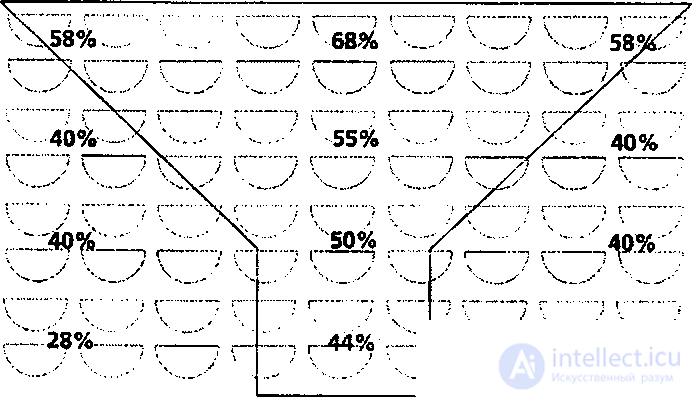Using data obtained by Robert Sommer, Adams and Biddle, we conducted an audience study to evaluate the participation of delegates occupying certain places in the presentation process and the degree of assimilation of the information received. Our results almost completely coincided with those obtained by Robert Sommer, despite the fact that we examined adults, and Sommer - students. We also identified certain cultural differences between Australians, Singaporeans, South Africans, Germans, British, French and Finns. People with high status, mostly located in the forefront (this is especially noticeable in Japan) and prefer not to actively participate in the process. Therefore, we collected data only when all those present had the same status. We managed to identify the so-called “funnel effect”.
Lecturer

Evaluation of learning and participation in the process, depending on the place occupied by the listener (Pease, 1986) As you can see, the degree of attention of listeners in the audience is different. In any room there is a so-called "learning zone" in the form of a funnel. It expands from the center of the audience and completely covers the first row. The listeners inside this funnel are the most attentive and active. They interact with the lecturer and best absorb the information received. Those who do not want to take part in the discussion, prefer to sit in the back rows or on the side seats. These listeners are more negative and are always ready for conflict. The degree of assimilation of information they have the lowest. In the back rows, students have an excellent opportunity to take a nap, do their own thing, or just run away.

Comments
To leave a comment
Body language
Terms: Body language